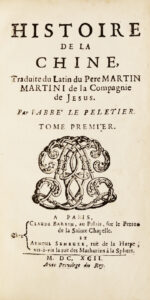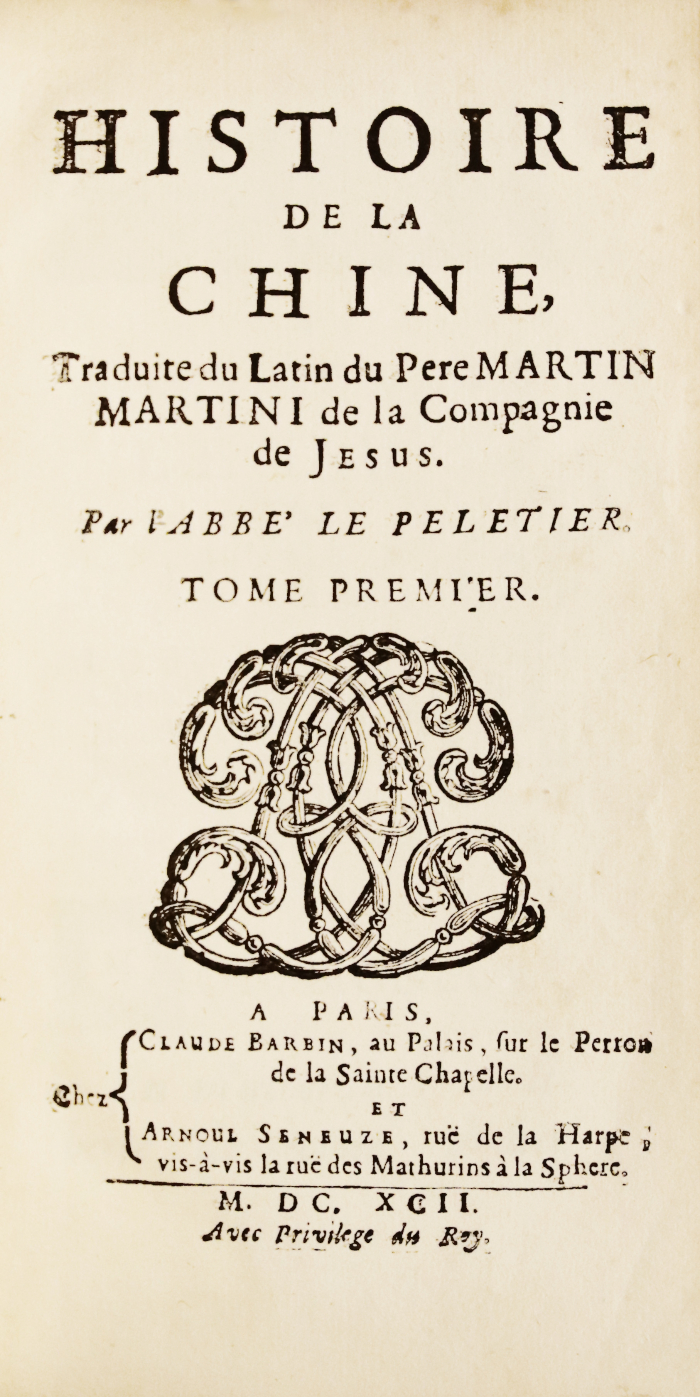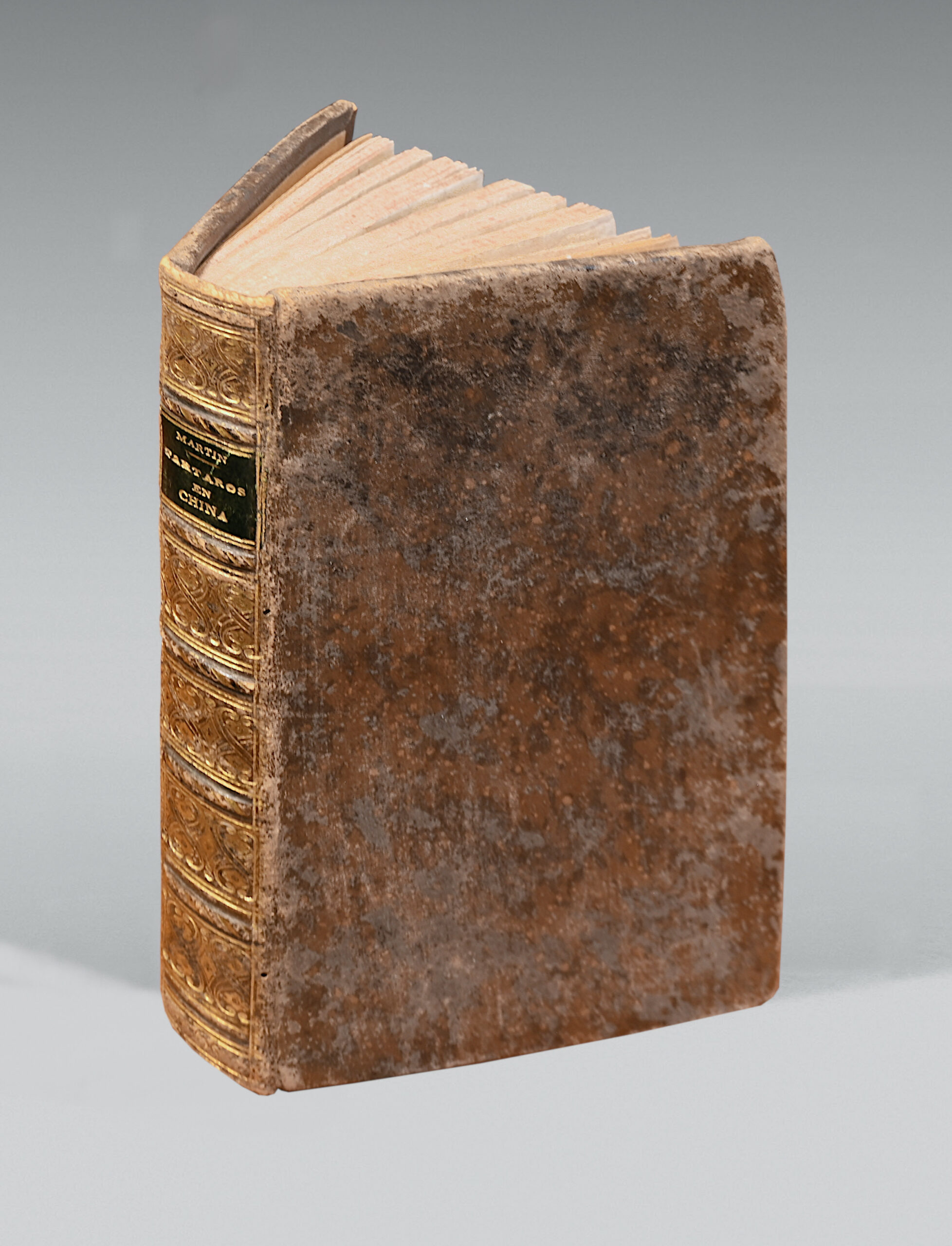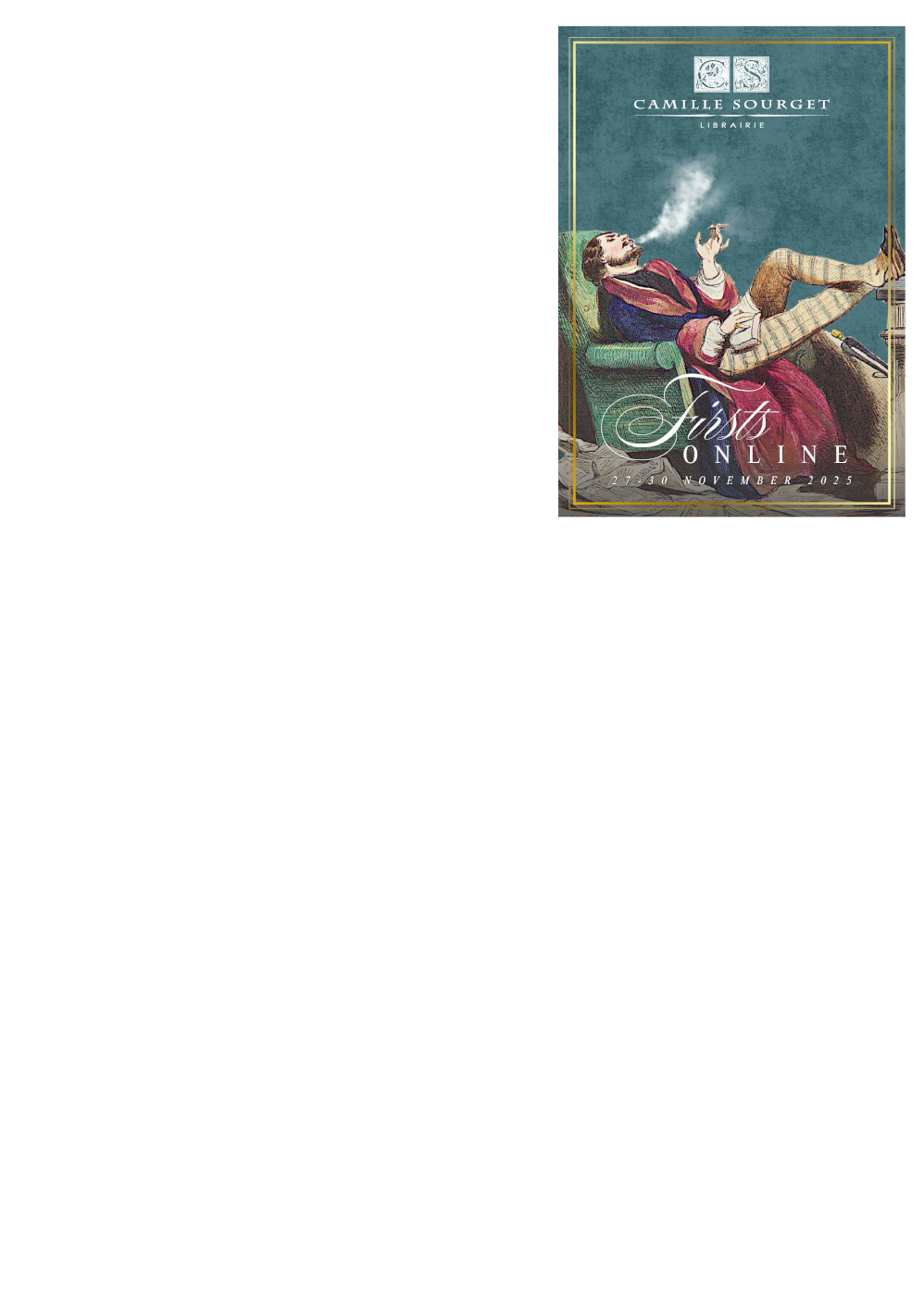Madrid, Joseph Fernandez de Buendia, 1665.
In-16 de (20) ff., 188 pp. Basane brune, dos à nerfs très orné, pièce de titre de maroquin vert, tranches mouchetées. Reliure de l’époque.
145 x 98 mm.
Rare première et unique édition espagnole de la fameuse description de la Chine de Martini.
Cordier, Sinica, 626 ; Sommervogel, 648 ; Lust 445; Palau 156356 ; Streit-Dindinger V, 2321.
This Spanish translation was prepared by Estevan de Aguilar y Zuñiga.
Martinio’s work was first published in Latin in 1654 and was « considered at the time to be the best general description of China before Du Halde… [It] includes an account of the Manchu conquest of China » (Lust [440]).
Martini (1614-1661) was a remarkable Italian Jesuit, cartographer and traveler; he is known for his history of China and his cartographic renderings of the country; the latter so important, that eventually were published as one of the volumes of Blaeu’s monumental ‘Atlas Nuevo de la extrema Asia, o descripcion geographica del Imperio de las Chinas’, published in 1658. Martini sailed to China in 1640, making port in Macau in 1642, where he stayed for over 10 years studying the cartography, language and history of China, and becoming the superior of the mission at Hang-Tcheou; after that he parted back to Europe to work on his atlas. After a few years he made his way back to China until his death.
His fame and the respect gained were partially due to his use of the Chinese cartography available at the time, thus not only relying on European maps but on local maps as well. Death would find him in China in 1661.
Even today, in China, he is arguably the most regarded missionary to have ever stepped foot in that country, and has been called « the first to study the history and geography of China with rigorous scientific objectivity; the extend of his knowledge of the Chinese culture, the accuracy of his investigations, the depth of his understanding of things Chinese are examples for the modern sinologists » (Prof. Ma Yong, Chinese Academy of Social Sciences).
Précieux exemplaire de ce rare ouvrage sur la Chine conservé dans sa reliure de l’époque non restaurée.



